Gilya Schmidt's Publications
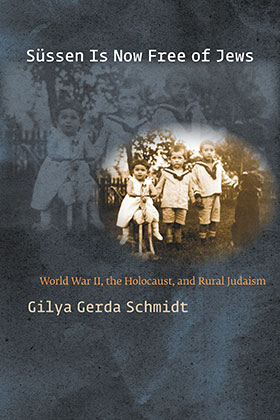 Süssen Is Now Free of Jews
Süssen Is Now Free of Jews
World War II, the Holocaust, and Rural Judaism (2012)
Süssen Is Now Free of Jews offers a close look at the legacy of a few Jewish families from Süssen-a village in the District of Göppingen, which is located in the state of Baden-Württemberg in southern Germany. The author, Gilya Gerda Schmidt, looks at this rural region through the lens of two Jewish families—the Langs and the Ottenheimers—who settled there in the early twentieth century. As a child, she shared with the Langs the same living space for just a few months. She remembers her mother's telling her of the Jews who lived in Süssen until the Holocaust.
read more...
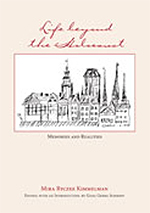 Life beyond the Holocaust (2005)
Life beyond the Holocaust (2005)
"Mira Kimmelman, author and survivor, tells of the painful experiences connected with reentering society in the aftermath of the Holocaust. It is at once a testimony to Mira's extended family and friends who perished in the Holocaust, as well as those who survived, and an ethical will to her children and grandchildren. The volume was edited by Gilya Schmidt, who also wrote an extensive historical introduction."
 "Die anderen Süssener," in Hohenstaufen/Helfenstein. Historisches Jahrbuch für den Kreis Göppingen. (2003)
"Die anderen Süssener," in Hohenstaufen/Helfenstein. Historisches Jahrbuch für den Kreis Göppingen. (2003)
First ever history of two Jewish families (Lang and Ottenheimer) and their fate in the south-German village of Süssen, District Göppingen between 1902 and 1941.
 The Art and Artists (2003)
The Art and Artists (2003)
This book illuminates the Jewish art exhibition at the Fifth Zionist Congress in Basel, Switzerland, in 1901, discussing the participating artists and their art, and elaborating on the exhibition's contribution to our understanding of Jewish history and culture.
 Letters on the Occasion… (2001)
Letters on the Occasion… (2001)
Translation of six letters by an anonymous author, identified as the Lutheran theologian Friedrich Schleiermacher, in response to the equally anonymous Sendschreiben by David Friedlaender in support of or contradiction to the question of Jewish emancipation. Includes historical introduction to Jewish life in Berlin.
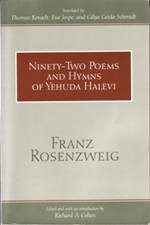 Ninety-Two Poems and Hymns of Yehuda Halevi (2000)
Ninety-Two Poems and Hymns of Yehuda Halevi (2000)
This is the first publication in English of Franz Rosenzweig's 1927 translation of and commentaries on ninety-two poems and hymns of the greatest medieval "singer of Zion," Yehuda Halevi. Franz Rosenzweig, one of the greatest Jewish philosophers of the modern period, translated these poems into German with copious commentaries. Schmidt, in turn, translated the poems into English for this volume.
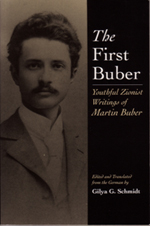 The First Buber (1999)
The First Buber (1999)
As a college student at the University of Leipzig and then Berlin, Martin Buber was a leader in the early Zionist movement. During this period, between 1898 and 1902, he published a series of Zionist writings that were clearly meant to be confrontational and challenge those who were complacent about Judaism. For Buber, Zionism meant a reorientation of the entire being, an overcoming of a diaspora mentality, a catharsis, and a readiness to build a new, just, free, and creative individual in the diaspora and community in Eretz Israel.
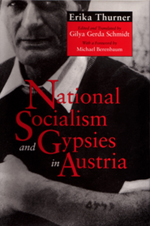 National Socialism and Gypsies in Austria (1998)
National Socialism and Gypsies in Austria (1998)
This book was originally published in German by Dr. Erika Thurner. Entitled Nationalsozialismus und Zigeuner in Oesterreich, it was volume 2 in the series Veroeffentlichungen zur Zeitgeschichte, published in Vienna in 1983. This is a ground-breaking study of Nazi policy toward Gypsies during the Third Reich. Of the eleven thousand Gypsies living in Austria at the start of the war, only three thousand survived Nazi persecution.
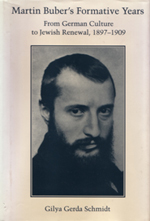 Martin Buber's Formative Years (1995)
Martin Buber's Formative Years (1995)
Martin Buber (1878-1965) was born into a world of two cultures – his Jewish family and his Austrian fatherland. During his childhood with his grandparents in Galician Lvov, Jewish values and German aesthetics coexisted. But not so in fin-de-siecle Viennese society. Jewish hopes for full social integration were disappointed, Yiddish culture was disparaged, and the Jewish religion was seen as ossified. In his personal confusion, Buber clearly grasped the essence of the problem: emancipation had failed, German culture was dying, Jews were on their own, and tradition was no longer viable. What to do? Buber wholeheartedly immersed himself in the making of a new world, of Zionist culture, of Hasidic spirituality, of Romantic individuality, and of unity from diversity. By examining the multitude of disparate sources that Buber turned to for inspiration, this book aims to elucidate Buber's creative genius and his contribution to turn-of-the-century Jewish renewal.